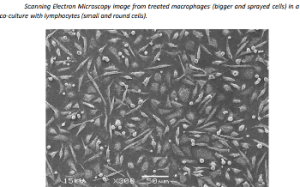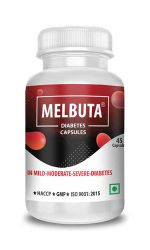The leukocytes interact with tumor cells to influence the development of tumors. In general, monocytes/macrophages can be polarized to M1 or M2 macrophages, that is, macrophages can differentiate into a classically or alternatively activated phenotype. Classically activated macrophages, also known as M1-polarized macrophages, are activated by cytokines such as interferon-γ, produce proinflammatory and immunostimulatory cytokines (e.g., IL-12), and are involved in Th1 responses to infection.

img. : Scanning Electron Microscopy image from treated macrophages (bigger and sprayed cells) in a co-culture with lymphocytes (small and round cells).
Tumor-associated macrophages (TAMs), are immune cells that can modify various factors in the tumor microenvironment. TAMs are thought to be more closely with M2-polarized macrophages, also known as alternatively activated macrophages, which are activated by Th2 cytokines (e.g., IL-4). TAMs can promote proliferation, invasion, and metastasis of tumor cells, stimulate tumor angiogenesis, and inhibit antitumor immune response mediated by T cells, followed by the promotion of tumor progression. Some experiments with M1 and M8 it seems to do exactly the opposite, that is, decreased proliferation of tumor cells and metastasis, diminished neoangiogenesis and increased cytotoxicity by T cells. It seems M1 and M8, in different ways, in presence of tumor cells changed the phenotype of M2 (TAMs) to enhance M1 polarization of macrophages. These new medicines are biological response modifiers and are produced with homeopathic techniques. All they need to be vigorously shaken to be effective. These products did not interfere in the cell cycle, did not damage the DNA molecule and did not induce apoptosis. Briefly, they are not toxic, neither mitogenic, nor mutagenic.
One of the key features of macrophages is their plasticity, which enables them to change their phenotype in the tumor microenvironment. Thus, reprogramming TAMs to an antitumor phenotype is an attractive therapeutic strategy, and apparently, we can do this with NEW FORMS OF IMMUNOTHERAPY.





